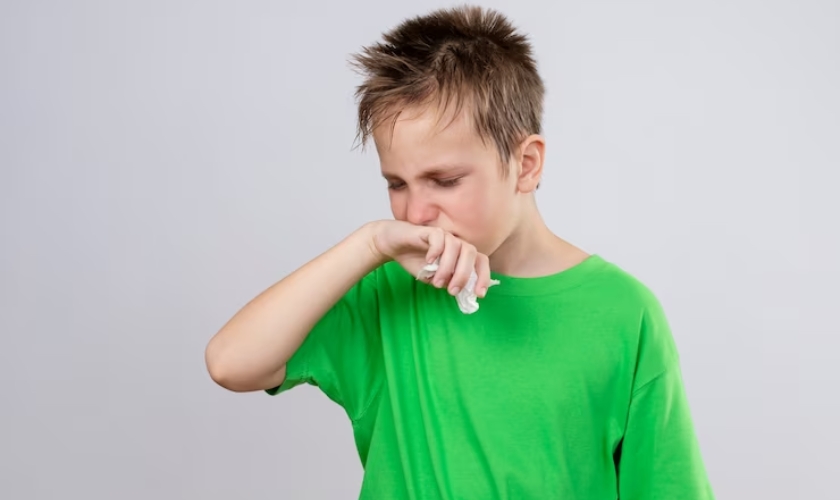A child’s laughter is one of the purest sounds, but when accompanied by an unpleasant odor, it can be a cause for concern. Bad breath, or halitosis, is not exclusive to adults; children can also experience this issue for various reasons. While it may not always indicate a serious health problem, addressing the root causes is crucial for both oral hygiene and overall well-being. In this blog, we will explore four common reasons for bad breath among children, offering insights and solutions to keep those young smiles fresh and healthy.
What is Halitosis?
Halitosis, commonly known as bad breath, is a condition characterized by an unpleasant odor emanating from the mouth. It is not limited to adults; children can also experience halitosis for various reasons. The foul smell associated with halitosis is often a result of the release of sulfur compounds by bacteria that reside in the mouth. These bacteria break down proteins present in food particles, saliva, and plaque, producing gasses with distinct and unpleasant odors.
In children, the causes of halitosis can be diverse, ranging from simple factors like poor oral hygiene to more complex issues such as respiratory conditions. Identifying and addressing the underlying cause is crucial for effectively managing and preventing bad breath in children. Encouraging good oral hygiene practices, promoting a healthy diet, addressing respiratory concerns, and scheduling regular dental check-ups are essential steps in maintaining a child’s oral health and preventing halitosis.
Common Reasons Behind Bad Breath Among Children
Poor Oral Hygiene
The foundation of good breath begins with proper oral hygiene. Children, especially in their early years, may need to be more diligent brushers. Inadequate brushing and flossing can lead to the buildup of bacteria in the mouth, causing not only bad breath but also potential dental issues. To tackle this, instill a routine of brushing at least twice a day and flossing regularly. Educate your child on the importance of cleaning their tongue, where bacteria can also reside. Using child-friendly toothpaste and a soft-bristled toothbrush can make the experience more enjoyable for them.
Diet and Dehydration
Children are notorious for their love of sugary snacks and drinks. What many parents might not realize is that these can contribute significantly to bad breath. The sugars in food and beverages can be a feast for bacteria in the mouth, leading to the release of unpleasant odors. Encourage a balanced diet rich in fruits and vegetables while limiting sugary treats. Additionally, ensure that your child stays adequately hydrated throughout the day. Water not only keeps the mouth moist but also helps wash away food particles and bacteria that can cause bad breath.
Respiratory Issues
Sometimes, bad breath in children can be a sign of underlying respiratory issues. Conditions like sinus infections, allergies, or even the common cold can result in postnasal drip, leading to an unpleasant odor. It’s essential to pay attention to any accompanying symptoms and consult a healthcare professional if needed. To manage respiratory-related bad breath, focus on treating the underlying condition. This may involve using saline nasal sprays, administering prescribed medications, or employing other strategies recommended by a healthcare provider.
Dental Issues
Beyond inadequate oral hygiene, dental problems can also contribute to bad breath in children. Cavities, gum disease, or infections can produce foul smells that linger in the mouth. Regular dental check-ups are crucial to identify and address these issues promptly. Emphasize the importance of dental visits and ensure your child receives professional cleanings and examinations. Addressing dental problems early not only improves breath but also sets the stage for a lifetime of good oral health habits.
Ways to Reduce the Effects of Bad Breath in Children
- Encourage Regular Dental Hygiene: Ensure that your child brushes their teeth twice a day with fluoride toothpaste. Teach them the importance of brushing all surfaces of their teeth, including the tongue and gums. Use a soft-bristled toothbrush suitable for their age to avoid causing irritation.
- Promote Proper Tongue Cleaning: Teach your child to gently brush their tongue as part of their oral hygiene routine. The tongue can harbor bacteria that contribute to bad breath. Some toothbrushes have a tongue cleaner on the back of the brush head, or you can use a separate tongue scraper.
- Stimulate Saliva Production: Chewing sugar-free gum or eating sugar-free candies can help stimulate saliva production, which helps wash away bacteria in the mouth. Ensure that the gum or candy is age-appropriate and does not pose a choking hazard.
- Regular Dental Check-ups: Schedule regular dental check-ups for your child to ensure that any potential dental issues, such as cavities or gum problems, are addressed promptly.
Maintaining a child’s oral health goes beyond simply ensuring a bright smile; it involves addressing the factors that can contribute to bad breath. Proactive measures, from establishing proper oral hygiene habits to monitoring their diet and addressing potential health issues, can make a significant difference. By understanding and tackling the common reasons for bad breath in children, parents can contribute to their overall well-being and ensure those infectious giggles come with a breath of fresh air.




